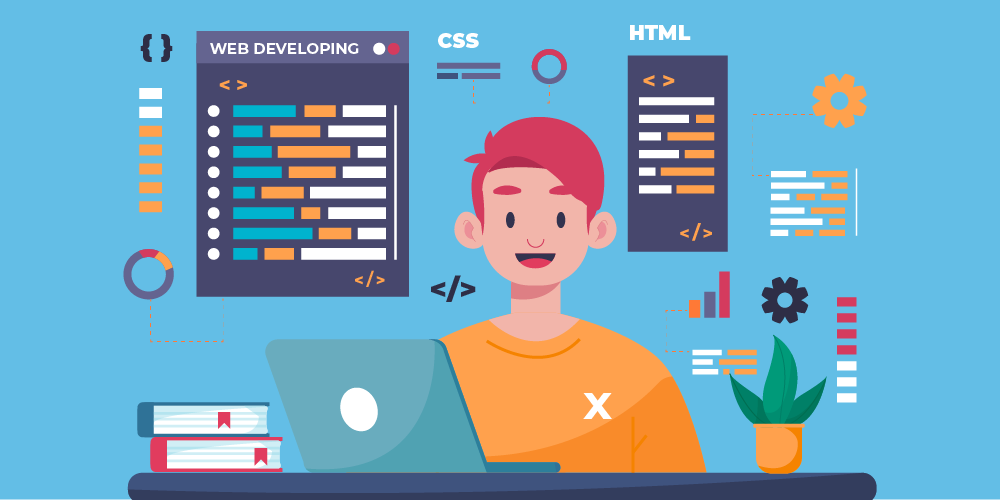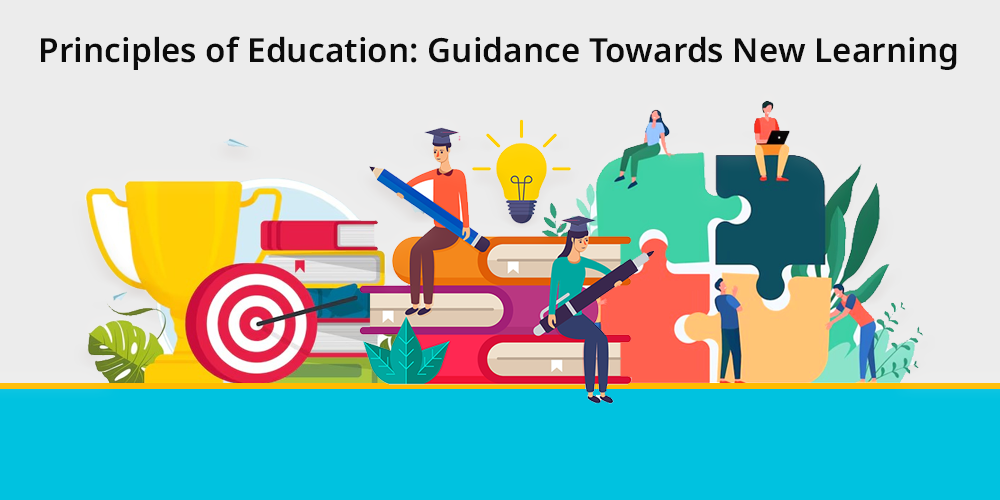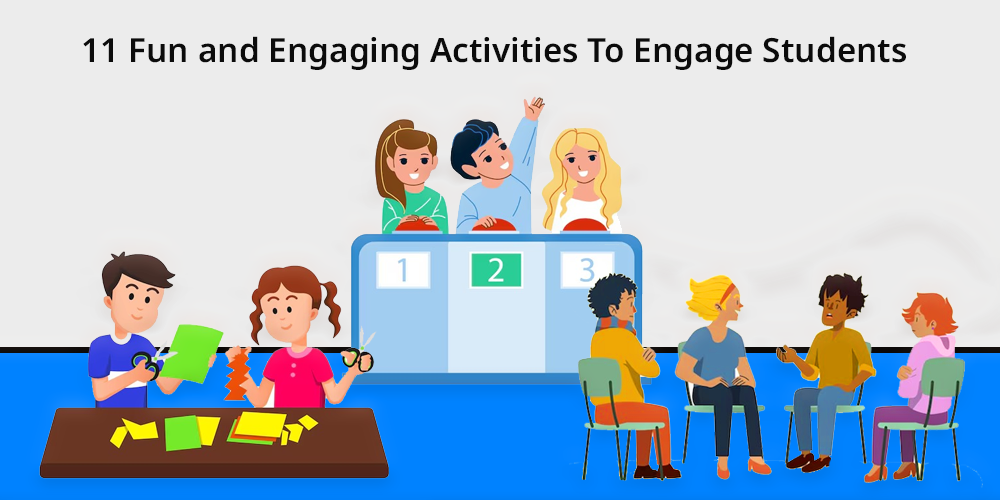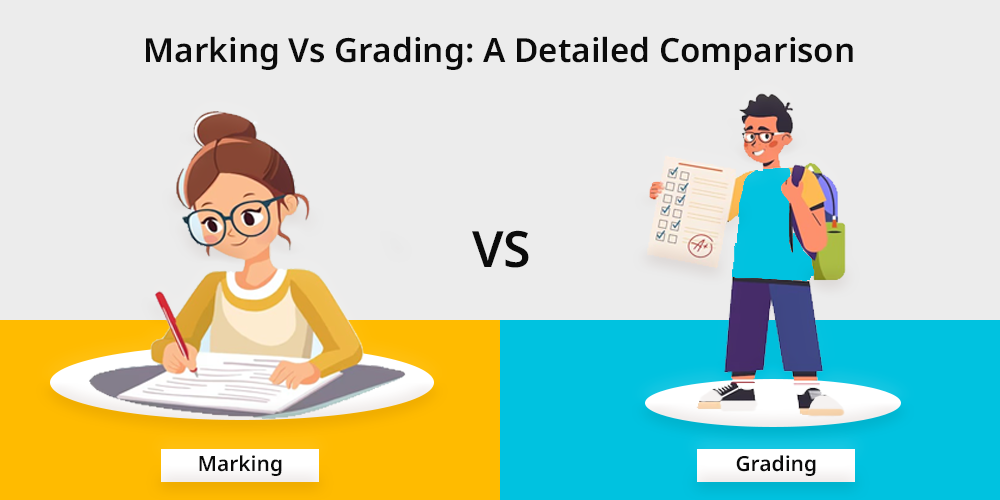
These days, coding is a skill that is very valuable for children. But, is coding hard for kids? Various modern tools and technologies such as websites, games, robots and mobile apps, rely on coding.
Yet, coding is something that should be taught to kids as well as it is for adults. Coding for kids focuses on sharing programming ideas in an enjoyable and age-friendly manner.
Through different beginner-focused tools, even kids aged five can begin to discover the digital world. Learning to code can help your child, no matter if they want to work with apps or enjoy making games.
Since it provides a good base for both education and their jobs.
Contents
What is Coding for Kids?
When kids are taught coding, they learn in ways that are easy for them since kids learn differently than adults. They use visual blocks rather than writing complicated code for loops, vars and if conditions.
After a while, children can start using programming languages like Python, Lua and Swift that are based on text.
Often, coding for kids looks like:
- Coding that uses drag-and-drop blocks (for example, Scratch and Blockly)
- Game and app development
- Learning programming by using LEGO Mindstorms and Sphero
- Essentials of web design
- Animation and the art of storytelling
The main goal is to nurture problem-solving, creative thinking and the basics of computers, going beyond just coding.
Why Is Coding Important for Kids?
Other than developing your brain into something, what we call a good problem-solver, coding has other benefits. Some of these skills and advantages are mentioned below, to understand why your child should be into coding:
1. Increases Sound Reasoning and Problem Solving
Coding helps children sharpen their thinking abilities. They develop the skills to identify issues, handle them one step at a time and pick sensible decisions. Almost everyone can use these abilities in any subject or situation.
2. Fosters Creativity
With coding, kids have the power to create anything they can think of such as drawings and stories. It makes each individual an innovator in the field of technology.
3. Helps Kids Learn Better
When you code, you help your brain remember math concepts (like patterns and sequences) and the basic building blocks of language. It strengthens your memory, attention and ability to think strategically.
4. Encourages Persistence
Part of programming involves fixing errors in code which is called debugging, and requires persistence. From the start, kids recognize that errors are normal and keep trying to make their programme work better.
5. Paves the Way for Tomorrow
Almost all professions depend on technology. No matter if your child chooses to be a doctor, a designer or an entrepreneur, learning to code will help them succeed.
Top Coding Languages for Children
Among the pool of so many extraordinary coding languages discovered till now, some still remain unique and popular. These coding languages are prominent due to their unique features and ease of operation.
1. Scratch
The block-based coding language Scratch is best for kids in the age group 5–12. Children can build both games, stories and animations using bright blocks that fit together like pieces in a puzzle.
Pros:
- Extremely beginner-friendly
- Encourages creativity
- The community is large and helps by sharing different projects.
Also read: How long will it take to learn the Scratch Programming Language ?
2. Blockly
Unlike Scratch which does not translate its blocks, Blockly demonstrates this, helping kids move forward.
Pros:
- Forces people to organize and understand concepts.
- Get ready for doing programming using text features.
These two coding languages like Scratch and Blockly, both come under block programming. Know more about What is block coding for kids ?
3. Python
People use a readable and simple language for web development, AI and data science called Python. This is recommended for children who are 10 and older.
Pros:
- Easy syntax
- Many organizations implement it on a daily basis.
- Applicable to applications such as games and chatbots
Here are 20 HTML, Python and coding vocabulary every kid should know.
4. Lua
In Roblox Studio, Lua helps children build their own games and game rules using the program.
Pros:
- Offers excitement for game players
- Supportive community
5. Swift
Apple provides Swift language used to develop iOS applications. Through the Swift Playgrounds app on an iPad, children can easily grasp its ideas.
Pros:
- Graphics and interactivity
- It’s useful for people interested in developing iOS applications.
6. Java
Java is a language commonly used for Android app and game development as well as for modding Minecraft. Well suited to kids and teens who require a more challenging read.
7. C++
Although C++ is strong and can be used in many ways, it is also more difficult to understand. This software can help high schoolers interested in computer science or game design.
8. HTML5
Although HTML5 is not a programming language, it is necessary for web design. Usually, HTML goes along with CSS and JavaScript.
9. PHP
It is a technology used in making active and engaging websites. Anyone who wants to work with backend development can use PHP to try out some basic projects.
12 Coding Platforms That Help Kids Learn Coding
Following is the list that would give you the stage to practice and perform coding, in order to build games, web designs, etc. Most of these platforms are free of cost and easily accessible.
1. Scratch
Scratch platform of block-based coding is designed for those who are new to programming. Children can make interactive tales, fun games and animations just by moving items around on the screen.
Key Features:
- Drag-and-drop interface
- Great diversity of characters, sounds, backgrounds
- Big community to share and remix projects
- Browser based, no download needed
Pros:
- Beginners will find it easy to learn on this platform.
- Countless people share projects online.
- Supports the formation of new ideas and tells short anecdotes.
Cons:
- It makes coding within limited blocks rather than using real programming languages.
- A constant internet connection is necessary.
2. Tynker
Tynker has courses in coding that are similar to games using block and text styles, especially with Python and JavaScript. It can be used together with Minecraft Modding and creative coding.
Key Features:
- Coding classes step by step
- Accommodates game design and STEM initiatives
- Interconnectivity with Minecraft, LEGO and drones.
Pros:
- Lastly, proper instruction to focus on actual programming languages.
- Combining Minecraft Modding and programming drones is a key feature.
- It is useful in schools and at home.
Cons:
- A lot of important features are stored behind a subscription.
- At the beginning, interfaces might look complicated to those who are still young.
3. Code.org
Code org is an online platform where novices can find courses about Star Wars, Frozen and Minecraft. It is excellent as a resource for students and people studying alone.
Key Features:
- Educationally acceptable curriculum
- Hour of Code activities
- Interactive tutorials in the form of games
Pros:
- Completely free.
- Every school incorporates its curriculums with computer science standards.
- Suitable for people who like to learn on their own and teachers.
Cons:
- Most of the courses are straightforward; there isn’t much involved at the advanced level.
- You have to sign up to use the service and check your progress.
4. Khan Academy
Online tutorials for JavaScript, HTML/CSS and computer animation that you can use at any time. This game is best for players from middle to high school.
Key Features:
- Video and text tutorials at self-paced.
- Live coding environment
- Quizzes and practice exercises
Pros:
- Full of quality content as well as different learning projects.
- Open and you can use it any time.
- The material is especially suited for middle and high school students.
Cons:
- Bear in mind, this platform is less gamified than some of the others.
- Supports the need for people to push themselves to continue doing well.
Now unveil why teach coding to high school students ?
5. Minecraft Education Edition
Learn coding by working with one of the most loved games, which is Minecraft Education Edition. While playing, kids use code to change aspects of the game and resolve various challenges.
Key Features:
- Sandbox environment for game-based learning.
- Integrated development code such as Code Builder
- Accommodates group work and solving problems
Pros:
- Game-based learning that motivates kids to learn in an engaging manner.
- Supports people to work together and be creative.
- Helps students gain knowledge in block coding as well as JavaScript.
Cons:
- Requirements include new fees for the education license.
- It is possible for them to distract themselves if not appropriately monitored.
6. Spike Prime by LEGO Education
Uses both robotics and coding skills with LEGO elements. Allows students to experience engineering by doing varied activities.
Key Features:
- Scratch and Python coding is used.
- Sensors and motors robotics kits
- STEM projects that are aligned to curriculum
Pros:
- Offers engineering tasks that use programming and coding.
- Teamwork and project-based learning comes easy with it.
- Boosts a person’s skills in solving problems and working with logic.
Cons:
- To build it, you have to own the LEGO package, which is costly.
- The game is not advised for children too much younger than 10.
7. Swift Playgrounds
An iPad application that teaches Swift coding interactively using 3D games and different challenges.
Key Features:
- Puzzles and 3D challenges that are interactive.
- One can learn Swift syntax and concepts
- Direct integration with iOS developments tools
Pros:
- It is possible for new gamers to learn because of its engaging 3D Interactive Challenges.
- Swift is used in actual programming.
- Has pretty design elements and smooth performing functions.
Cons:
- It can be found only on Apple devices.
- Not as varied as those on other platforms.
8. Hopscotch
Kids can use this iOS app to make their own games and animations. Has programming that uses icons like Scratch.
Key Features:
- Drag-and-drop coding
- Community to post and remix projects
- Invites storytelling (in the design)
Pros:
- Creates a place for users to express themselves and tell their stories through pictures.
- Simple programming with icons that are easy to read.
- An outstanding app for new mobile users.
Cons:
- iOS-only platform.
- Sometimes, coding is not advanced enough.
9. Lightbot
Users of this coding-themed puzzle game are challenged to connect blocks using logical commands. In order to “light them up” as they progress through the levels.
Key Features:
- Puzzles solving logics and sequencing.
- iOS, Android, and web-compatible.
- Increasing levels of difficulty.
Pros:
- You can learn the basics of programming through playing some games.
- You can use it on different devices (web, Android, iOS).
- Appropriate for kids who are older than 5 years.
Cons:
- You won’t be instructed on how to write code.
- The game becomes repetitive once all the challenges are dealt with.
10. CodeMonkey
Makes learning popular coding languages such as CoffeeScript enjoyable by using games as teaching tools. Well suited for learning in class and at home.
Key Features:
- Coding games told in stories
- Management tools-classroom
- Increasing levels of difficulty.
Pros:
- It is easy to move from modules to real programming.
- Fosters an approach to think logically and try to fix any errors.
- There are excellent support tools within the classrooms.
Cons:
- Most games on these platforms are not entirely free and you have to pay for some levels.
- In the beginning, interfaces can be confusing and overwhelming.
11. Roblox Studio
Provides Lua scripting for kids to design their own game in Roblox. Perfect for coders who have a good understanding of programming.
Key Features:
- Complete game development system
- Lua Scripting support
- Opportunities of monetization within the platform
Pros:
- This is perfect for kids who are older and enjoy making and playing games.
- The language Lua is used in real programming.
- A community of users is well established, and there is a good opportunity to make money.
Cons:
- Learning the software is more demanding.
- Adults should keep an eye on students when they use the Internet.
Visit some of the best websites for kids to learn coding.
Interactive Activities for Teaching Kids Coding
For kids, feeling overwhelmed with the extensive codes, need some activities that incorporate learning into coding. These fun and interactive tasks might teach how to improve coding skills, include:
- Make the Experience into a Game: Pick platforms that encourage your learning by giving badges, levels and characters. The apps CodeCombat and Tynker help people learn in a game-like setting.
- To Create With Code: Kids should be able to decide what kind of projects they want to make—a game, an animation or a quiz. Projects in the classroom work better than just teaching rules.
- Integrate Robotics: Coding can be made more real by using robot pieces from Sphero, Ozobot or LEGO. It feels outstanding to see my code working after all the hard work.
- Arrange Coding Challenges: Come up with short competitions that are easy and fun to do.
- Develop a game in just an hour.
- Design an animation to show your daily routine
- Develop a chatbot that can make people laugh by telling jokes.
- Collaborate: Help encourage collaboration when working on coding activities. When kids work as a group, they learn from each other, handle different roles and enjoy succeeding as a group.
Guidelines for Parents and Educators on Teaching Kids about Coding
Parents play a significant role in building coding skills among students. If they follow the following steps, they can ensure that their children would ace in coding from a young age.
- Start young: Use games and toys to teach children the very first concepts of coding during kindergarten.
- Make use of free resources: Code.org, Scratch and Khan Academy are highly recommended and can be used without cost.
- Teach to Learn From Mistakes: Take it easy when your child messes up. Going through the debugging process greatly helps you understand programming.
- Appreciation: Point out when your kids achieve their goals, so it helps keep them encouraged.
- Developing Focus: Support your child by paying attention to the construction they are involved in. You can also ask some questions or attempt to build something with your child.
- Keep Other Distractions: To avoid your child getting tired from too much screen time, add in playing with logic games and robots.
Here are some of the other tips on how to teach coding at home.
In Conclusion
Coding helps young people become confident, creative and prepared for the future. It motivates kids to work with, study and experiment with the technology they encounter regularly.
Coding helps kids learn to think clearly, solve problems and become self-reliant in making games or other digital projects.
To start your child on coding, all you really need are proper tools, a little motivation and some desire to explore. When parents, educators and engaging websites support a child, they have the chance to become good coders and creators.



